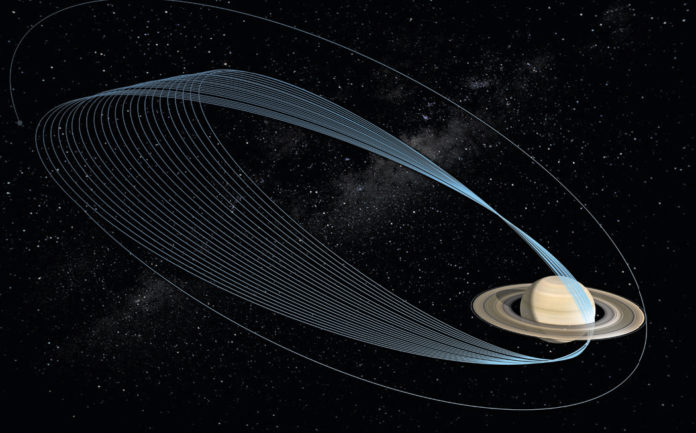Cassini has always kept the space and astronomy world busy by exploring the unexplored parts of Saturn. The space craft will soon end its voyage.
NASA’s Cassini spacecraft will make its first dive through the narrow gap between Saturn and its rings on April 26, 2017. The gap, unexplored so far, poses a great challenge to the spacecraft and the team behind this. Cassini will use its dish-shaped high-gain antenna as a protective shield while passing through the ring plane. During the drive, Cassini will not have contact with the Earth due to its antenna-forward orientation.

Credits: NASA-JPL
Although the teams expects no particles larger than smoke particles in the region, they have taken precautionary measures on the first dive. The team will collect the data using the Radio and Plasma Wave Subsystem to determine the size and density of ring pticles.
Technically, Cassini began its Grand Finale orbits on April 21, as it made its 127th closest approach to Titan. The last close brush with Saturn’s hazy moon Titan marked the beginning of the final set of 22 orbits around Saturn. Cassini also received a large increase in velocity of precisely 860.5 meters per second with respect to Saturn from this encounter.

Credits: NASA
On April 26, At 1:34 a.m. PDT (2:04 p.m. IST), Cassini will begin a 14-minute turn, to point its high-gain antenna into the direction of oncoming ring particles. This orientation will acts as a protective shield for the spacecraft. At around 2 a.m. PDT (2:30 p.m. IST), Cassini will cross the ring plane during its dive between the rings and Saturn. The space craft will not be in contact with Earth for a while.

Credits: NASA/JPL-Caltech
The final phase of this 20 year long mission will help scientists study the nature of particles in the gap and also the Saturn’s atmosphere. The mission will conclude with a science-rich plunge into Saturn’s atmosphere on September 15.
























